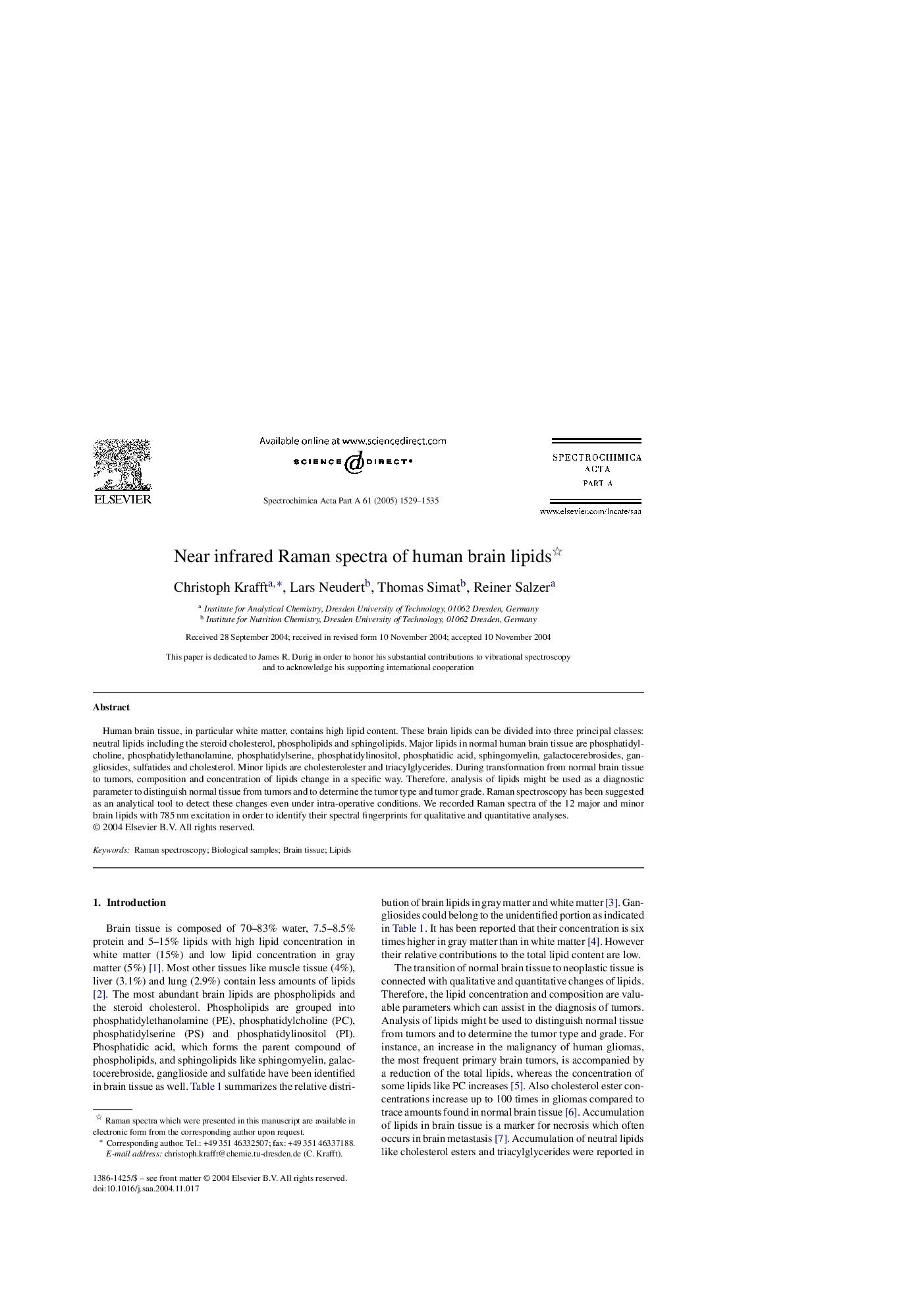| Article ID | Journal | Published Year | Pages | File Type |
|---|---|---|---|---|
| 10558310 | Spectrochimica Acta Part A: Molecular and Biomolecular Spectroscopy | 2005 | 7 Pages |
Abstract
Human brain tissue, in particular white matter, contains high lipid content. These brain lipids can be divided into three principal classes: neutral lipids including the steroid cholesterol, phospholipids and sphingolipids. Major lipids in normal human brain tissue are phosphatidylcholine, phosphatidylethanolamine, phosphatidylserine, phosphatidylinositol, phosphatidic acid, sphingomyelin, galactocerebrosides, gangliosides, sulfatides and cholesterol. Minor lipids are cholesterolester and triacylglycerides. During transformation from normal brain tissue to tumors, composition and concentration of lipids change in a specific way. Therefore, analysis of lipids might be used as a diagnostic parameter to distinguish normal tissue from tumors and to determine the tumor type and tumor grade. Raman spectroscopy has been suggested as an analytical tool to detect these changes even under intra-operative conditions. We recorded Raman spectra of the 12 major and minor brain lipids with 785Â nm excitation in order to identify their spectral fingerprints for qualitative and quantitative analyses.
Related Topics
Physical Sciences and Engineering
Chemistry
Analytical Chemistry
Authors
Christoph Krafft, Lars Neudert, Thomas Simat, Reiner Salzer,
